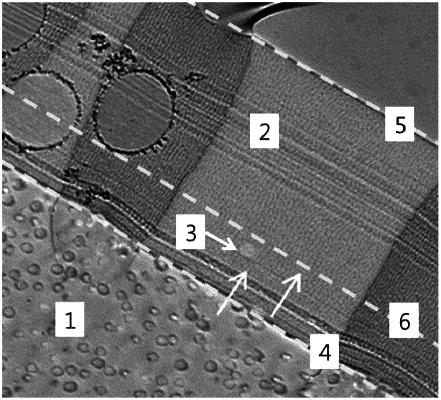| CPC G02B 1/111 (2013.01) [G02B 1/11 (2013.01); G02B 1/14 (2015.01); G02B 5/3025 (2013.01); G02F 1/133528 (2013.01); C09K 2323/03 (2020.08); G02F 1/133502 (2013.01)] | 16 Claims |

|
1. An optical laminate comprising: a polymer substrate containing a polymer resin and rubber particles having a cross-sectional diameter of 10 to 500 nm dispersed in the polymer resin; and
an antiglare layer containing a binder resin, and organic fine particles or inorganic fine particles dispersed in the binder resin,
wherein the organic fine particles have a cross-sectional diameter of 1 to 50 μm, and the inorganic fine particles have a cross-sectional diameter of 1 to 500 nm,
wherein an interface between the polymer substrate and the antiglare layer allows the rubber particles having a cross-sectional diameter of 10 to 500 nm that are contained in the polymer substrate to migrate into the antiglare layer,
wherein the migrated rubber particles having a cross-sectional diameter of 10 to 500 nm exist within 50% of the thickness of the antiglare layer from the interface between the polymer substrate and the antiglare layer,
wherein the organic fine particles or the inorganic fine particles contained in the antiglare layer aggregate to form protrusions having a diameter of at least 100 μm and a ratio of the number of the protrusions formed on an outer surface of the antiglare layer is 50/m2 or less,
wherein a ratio of the area of a region where the protrusions are located on the surface of the antiglare layer as defined by general formula 1 is 0.5 area % or less:
Ratio of the area of a region where the protrusions are located on a surface of the antiglare layer=(the number of protrusions*the area of a circle having a diameter of 5 mm)/the area of the surface of the antiglare layer (mm2), [General Formula 1]
wherein the “circle having a diameter of 5 mm” in the general formula 1 is defined as the region where the protrusions are located, and
wherein the optical laminate has a total haze of 0.1% or more and 3.0% or less, according to JIS K 7105 standard.
|